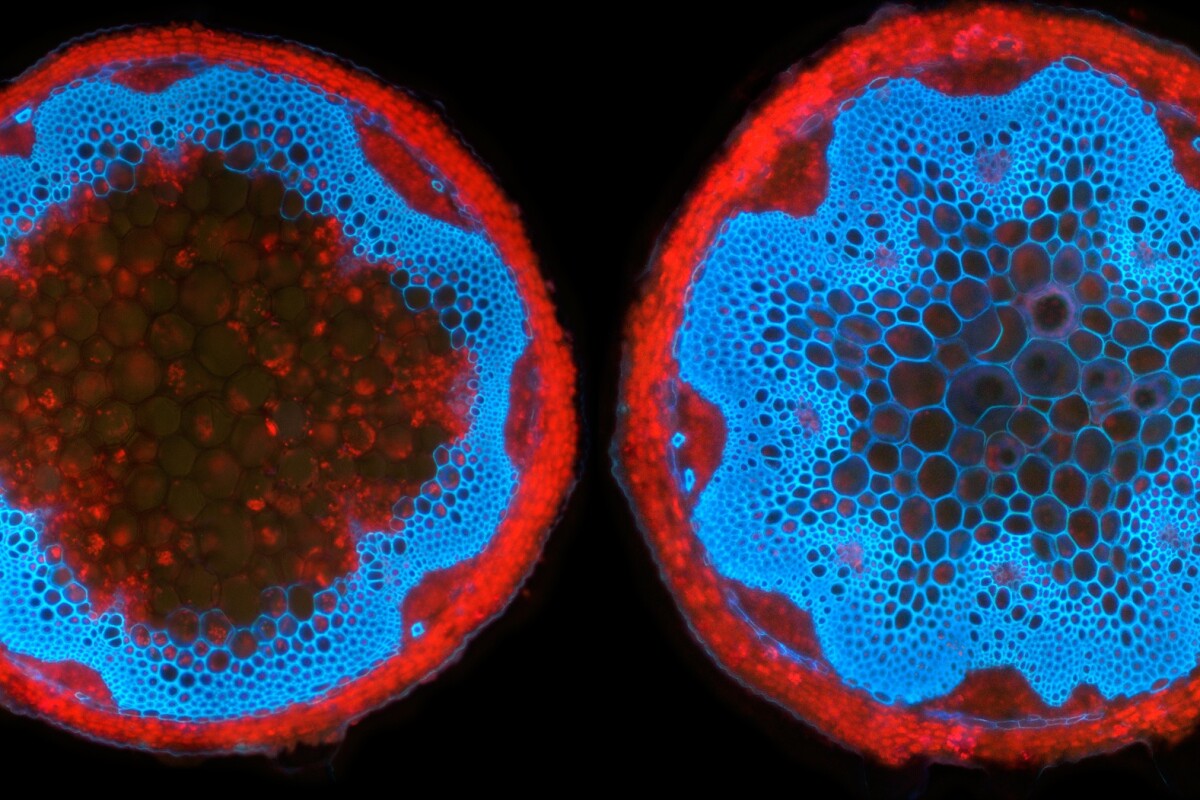Biofuel derived from crops such as switchgrass certainly holds promise, although some critics maintain that such crops use up too much agricultural land – land that could otherwise be used for growing food crops. A genetic discovery announced this Tuesday, however, reportedly allows individual plants to produce more biomass. This means that biofuel crops could have higher yields, without increasing their agricultural footprint.
The research was conducted at the Plant Biology Division of Oklahoma’s Samuel Roberts Noble Foundation. There, Dr. Huanzhong Wang discovered a gene that controls the production of lignin within the stems of Arabidopsis and Medicago truncatula, plants that are commonly used in genetic studies. Lignin is a compound that adds strength to plant cell walls, which gives stems their rigidity. When Wang removed the gene, there was a marked increase in the production of lignin and other biomass throughout the plants’ stems.
"In switchgrass, as the plant matures, the stem becomes hollow like bamboo," said division director Richard Dixon. "Imagine if you use this discovery to fill that hollow portion with lignin. The potential increase in biomass in these new plants could be dramatic. This technology could make plants better suited to serve as renewable energy sources or as renewable feedstocks to produce advanced composite materials that consumers depend on every day."
Further research with associates at the University of Georgia revealed that by removing the gene, production of cellulose and hemicellulose material in the stem was also increased. These carbohydrate-rich compounds, when converted to sugars, are used to create advanced biofuels like cellulosic-derived ethanol or butanol.
Ironically, most genetic research regarding lignin has involved trying to lessen its production, in order to make grazing crops more palatable for livestock.
The findings were recently published in the journal Proceedings of the National Academy of Sciences.




